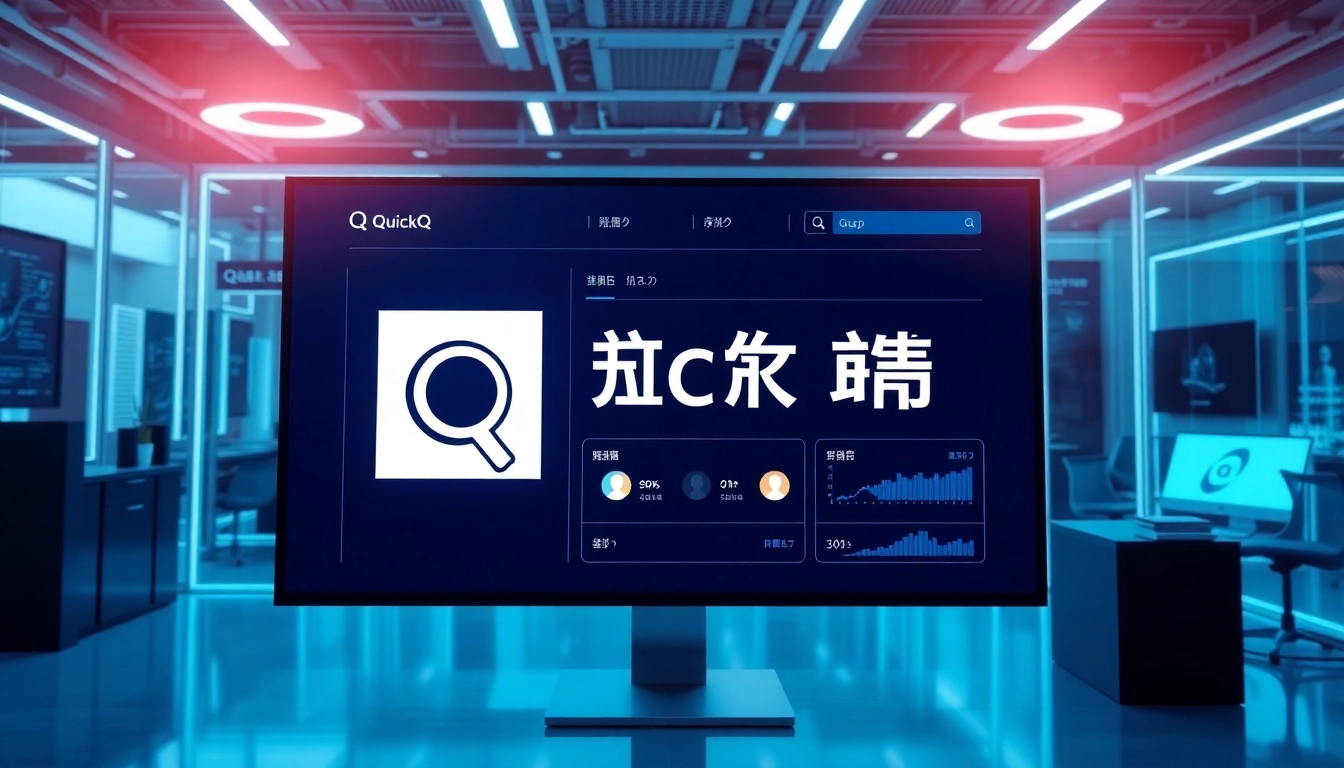The Role of Site Reliability Engineering Experts
Site Reliability Engineering (SRE) goes beyond mere systems administration by integrating software engineering principles into IT operations practices. With the growing complexity of software environments and an increased demand for system uptime, the role of Site reliability engineering experts has become crucial in ensuring the availability, performance, and reliability of services. Organizations that embrace SRE frameworks can streamline their operations and drive innovation while managing risks effectively. These experts not only automate mundane tasks but also contribute to building robust systems capable of withstanding real-world demands. For organizations looking to bolster their digital infrastructure, the need for Site reliability engineering experts has never been more pressing.
Defining Site Reliability Engineering
Site Reliability Engineering is a discipline that combines software engineering and systems engineering to create scalable and highly reliable software systems. The concept originated at Google, where teams dedicated to reliability started to emphasize the need for engineers to not only operate systems but also write code that helps those systems run smoothly. SREs seek to apply software engineering methodologies to traditional operations tasks, thus minimizing manual intervention and increasing automation.
At its core, SRE aims to identify the monitoring, alerting, and remediation needed to ensure system performance meets defined Service Level Objectives (SLOs). It focuses on crafting a sustainable balance between releasing features and maintaining system reliability—sometimes referred to as the reliability versus velocity trade-off.
Key Skills of Site Reliability Engineering Experts
SRE professionals require a versatile skill set that combines both technical and soft skills. The key competencies include:
- Programming Abilities: A foundational knowledge of programming languages such as Python, Go, or Java allows SREs to automate tasks and build tools for monitoring and troubleshooting.
- Understanding System Architecture: SREs need a deep understanding of network protocols, distributed systems, and microservices architecture to identify potential points of failure.
- Operational Expertise: Familiarity with incident response, troubleshooting, and postmortem analysis is crucial for mitigating issues in production environments.
- Collaboration: As SREs work closely with development, QA, and product teams, effective communication and teamwork skills are critical for success.
- Analytical Skills: The ability to analyze metrics and logs to derive insights into performance issues and user behavior aids in maintaining system reliability.
Importance of Site Reliability Engineering in Modern Businesses
The reliance on digital platforms across various industries has rendered system reliability a competitive differentiator. With downtime leading to significant revenue loss and reputation damage, SRE practices are vital. Key benefits of employing Site reliability engineering experts include:
- Increased Uptime: Proactive monitoring and incident response strategies help organizations maintain higher uptime and meet customer expectations.
- Efficient Resource Utilization: Automation allows for better resource allocation, reducing operational overheads and costs associated with manual processes.
- Faster Time-to-Market: By incorporating reliability into the development lifecycle, organizations can roll out features without compromising stability.
- Cultural Shift: SRE promotes a culture of collaboration between development and operations, breaking down silos and fostering a shared responsibility for service reliability.
Challenges Faced by Site Reliability Engineering Experts
Common Technical Challenges
Despite the advantages, SREs face numerous technical challenges. Some common obstacles include:
- Legacy Systems: Many organizations rely on older systems that are difficult to integrate with modern architectures and require significant refactoring.
- Complex Environment: The increasing complexity of applications, especially with microservices and cloud-native environments, makes it challenging to gain full visibility.
- Data Overload: The sheer volume of logs and metrics makes it hard to extract actionable insights without overwhelming the team with noise.
Dealing with System Failures
System failures are inevitable; the key lies in how they are managed. SREs must develop robust incident response strategies that include:
- Incident Management Processes: Establishing clear protocols for detecting, reporting, and resolving incidents is crucial for minimizing downtime.
- Automated Recovery Systems: Implementing automated health checks and recovery mechanisms can help restore systems promptly.
- Postmortem Analyses: Conducting thorough reviews after incidents can help identify root causes and prevent similar occurrences in the future.
Addressing Communication Gaps in Teams
One of the significant challenges for SREs is fostering a culture of communication within their organizations. Discrepancies in understanding reliability goals between development and operational teams can lead to misalignment. To address this:
- Shared Documentation: Maintain comprehensive documentation accessible to all teams to ensure everyone is on the same page.
- Cross-Functional Meetings: Regular meetings between developers, SREs, and stakeholders can facilitate transparency regarding priorities and reliability objectives.
- Collaboration Tools: Leveraging chat platforms and collaborative project management tools can bridge communication gaps effectively.
Best Practices for Site Reliability Engineering
Implementing Automation Techniques
Automation is the cornerstone of effective SRE practices. By allowing SRE teams to focus on high-level tasks, automation can significantly improve overall productivity. Recommended practices include:
- Infrastructure as Code (IaC): Utilize IaC tools to manage infrastructure through code, facilitating reproducibility and reducing configuration drift.
- Automated Monitoring: Implement automated monitoring systems that can alert teams to anomalies before they escalate into issues.
- CI/CD Integration: Embed reliability checks within Continuous Integration and Continuous Deployment pipelines to catch potential issues early.
Monitoring and Observability Strategies
Effective monitoring enhances visibility across complex systems. Adopting observability practices allows teams to gain deep insights into system behavior and identify potential issues. Strategies should include:
- Define SLOs and SLIs: Establish Service Level Indicators (SLIs) and Service Level Objectives (SLOs) to provide measurable targets for reliability.
- Centralized Logging: Use centralized logging solutions to aggregate logs from multiple services and facilitate easy searching and analysis.
- Distributed Tracing: Implement distributed tracing to monitor requests across microservices, enabling teams to identify bottlenecks and latencies.
Continuous Improvement Methodologies
SREs must cultivate a mindset of continuous improvement within their teams. This can involve:
- Regular Reviews: Conduct periodic reviews of SRE practices and frameworks to identify areas for enhancement.
- Experimentation: Encouraging teams to test new strategies and tactics through controlled experiments can yield valuable insights.
- Feedback Loops: Establish channels for collecting feedback on reliability practices and addressing them effectively.
Tools and Technologies Used by Site Reliability Engineering Experts
Overview of Popular SRE Tools
Numerous tools exist to assist SRE experts in managing systems and enhancing reliability. These tools generally fall into several categories:
- Monitoring and Metrics: Tools like Prometheus and Grafana provide powerful metrics monitoring and visualization capabilities.
- Incident Management: Solutions such as PagerDuty and Opsgenie help teams manage incidents and ensure timely responses.
- Configuration Management: Tools like Terraform and Ansible facilitate infrastructure automation and configuration management.
Integrating Observability into Development Pipelines
Observability must be integrated into the software development lifecycle (SDLC) to ensure reliability is considered at every stage. This involves:
- Incorporating SLI/SLO Review: Include discussions around SLIs and SLOs during planning sessions to align development with reliability goals.
- Embedding Metrics in Code: Ensure that developers are instrumenting their code with necessary metrics to facilitate easier monitoring.
- Automated Quality Gates: Implement quality gates in CI/CD pipelines that enforce observability benchmarks before code is deployed to production.
Cloud Services and SRE
Cloud services have radically transformed the infrastructure landscape. For SREs, leveraging cloud-native solutions can enhance scalability and resiliency. Best practices include:
- Health Checks: Set up health checks in cloud-managed systems to automatically detect anomalies that require attention.
- Cloud Monitoring Tools: Utilize cloud providers’ monitoring tools to seamlessly integrate metrics collection and alerting.
- Configuration Management Services: Employ cloud configuration services to track changes in infrastructure over time, ensuring compliance with best practices.
Future Trends in Site Reliability Engineering
Emerging Technologies Impacting SRE
The landscape of technology is always shifting. For SREs, staying ahead of emerging trends is crucial for maintaining reliability. Some key areas include:
- AI and Machine Learning: The integration of AI in monitoring systems can lead to predictive analysis and automated remediation strategies.
- Serverless Architectures: As businesses move toward serverless computing, SREs must adapt monitoring and reliability practices for ephemeral services.
- Chaos Engineering: Adopting chaos engineering practices to deliberately inject failures into systems can help identify weaknesses before they impact users.
The Evolving Role of Site Reliability Engineering Experts
As technology evolves, so does the role of SREs. The convergence of development and operations, often termed DevOps, emphasizes collaborative practices that necessitate continuous learning and adaptation. SREs are expected to:
- Lead Initiatives: SREs will increasingly take the lead in defining reliability standards and best practices across organizations.
- Educate Teams: Providing training and mentoring will help foster a culture of reliability throughout the organization.
- Collaborate with AI Specialists: Working alongside data scientists and AI engineers will enhance predictive maintenance and monitoring capabilities.
Preparing for Future Challenges in System Reliability
Anticipating and preparing for future challenges is a critical aspect of the SRE role. This requires developing adaptive strategies that include:
- Proactive Incident Management: Shifting focus from reactive to proactive incident management will enhance system reliability.
- Risk Management Training: Training teams to understand risk management principles will empower proactive decision-making.
- Community Engagement: Participating in industry forums and communities can keep SRE professionals updated on best practices and insights.














Leave a Reply